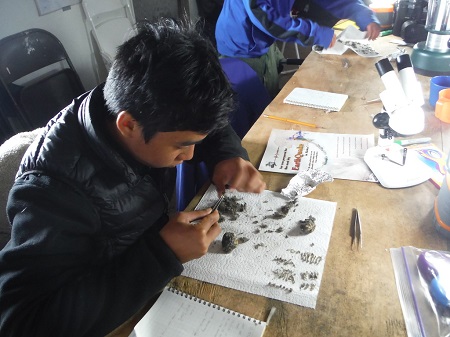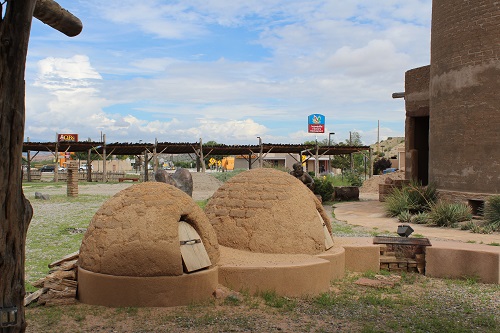
In another set of awards to connect communities in Indian Country to high-quality, reliable, and affordable broadband, the National Telecommunications and Information Administration (NTIA) released over $74 million to help fund Tribal Broadband projects across the country.
The Tribal Broadband Connectivity Program (TBCP), part of the Biden administration’s Consolidated Appropriations Act passed in the spring of 2021 and administered by NTIA, allocated nearly $1 billion in the first round of funding to support connectivity access and adoption initiatives in Tribal communities; namely, “broadband deployment on tribal lands, telehealth, distance learning, broadband affordability, and digital inclusion.” And while that may seem like a sizable investment, over 280 applications totaling more than $5 billion in funding requests were received before the first 90-day application window closed in September 2021, a reflection of the even larger need Tribal Nations have than what the federal program offers.
In November of 2021, the Infrastructure Investment and Jobs Act (IIJA) funneled another $2 billion into the program and extended the timeline for broadband deployment, turning the program into more than just a short-term pandemic response. Since then, NTIA has been announcing awards on a rolling basis with the program having distributed over $1.7 billion to 198 Tribal entities so far. The funding covers investment in new infrastructure, as well as upgrades and network planning.

The most recent funding awards were spread across six states, Alaska receiving by far the most, with nearly $54 million distributed across eight projects. Alaskan recipients include Igiugig Village, Alaska Tribal Spectrum, Alaska Village Initiatives, Alutiiq Tribe of Old Harbor, Benhti Economic Development Corporation, Chugachmiut, Huna Totem Corporation, and Yukon-Kuskokwim Delta Tribal Broadband. About $9 million of the funding awarded to Alaska will go towards feasibility studies and network planning, about $36.5 million will go towards wireless deployment, and nearly $8.5 million will go towards infrastructure upgrades and subsidizing satellite Internet for homes and anchor institutions.
Alaska Tribal Spectrum received the most at $29.5 million, and will use the funding to leverage 2.5Ghz spectrum and existing satellite service to bring broadband to over 2,500 Tribal homes and 125 Tribal businesses that do not currently have access to the Internet, as well as 89 Tribal community anchor institutions.
Tribes in New Mexico, Nevada, Oklahoma, Oregon, Washington and several other states also received funding. Among these were recipients of funding awards of about $500,000 each through what NTIA calls “equitable distribution,” the agency’s effort to spread the TBCP wealth equitably among federally recognized Tribes. NTIA stated in a press release: “the $500,000 allocation […] is intended to ensure that program funding is equitably distributed by NTIA to all eligible entities, including Federally Recognized Tribes. It is possible that the Tribes whose projects are described above applied for larger sums of grant money but did not receive what they asked for. NTIA received over $5.8 billion in applications from Tribes for TBCP funding, nearly double what was available.

In New Mexico, the Pueblo of Pojoaque received $500,000 to bring fiber to 75 homes. In Nevada, the South Fork Band Council and the Winnemucca Indian Colony of Nevada each received half a million to deploy wireless solutions to connect homes and public facilities. Winnemucca will also provide 42 fiber connections in addition to its wireless project. The Te-Moak Battle Mountain Band of Nevada was awarded the same amount to serve 31 homes and eight community anchor institutions with fiber, and the Iowa Tribe of Oklahoma received half a million to deploy wireless infrastructure near Tribal headquarters and finish planning for a hybrid fiber/wireless buildout.
Further west, the Cow Creek Band of Umpqua Tribe of Indians in Oregon received $482,000 for planning, engineering, feasibility, and sustainability work around the use of 2.5 GHz Spectrum all of the community’s broadband serviceable locations with 25/3 wireless service. Finally, the Quileute Tribe of the Quileute Reservation, located in Washington, was awarded $467,000 to bring fiber connections to 65 Tribal homes, businesses, and community anchor institutions.
A Landmark Program, with its Challenges
The TBCP represents an important forward step in that it is an unprecedented influx of funding that does not require Tribes to put up funding matches. The nearly $3 billion made available by the program has been and continues to be allocated to projects targeting a key infrastructure need that can bring benefits like telehealth, educational opportunities, and emergency communications to Tribal communities.
At the same time, some recipients of the funding report major delays, minimal support from NTIA during the grant proposal process, and bureaucratic challenges, which have posed a significant burden and even threatened to reduce the impact these grants have on Tribal lands.

The Hoopa Valley Tribe, which received a $65 million award in March, also encountered some bureaucratic challenges. The project was initially slated to connect up north to a regional 10 gigabit circuit called Klamath River Rural Broadband Initiative (KRRBI), a project which has been in permitting quagmire now for almost a decade. The Tribe was also interested in connecting to middle mile infrastructure to the south, called the Digital 299 build.
Hoopa was told such a plan was redundant, and that NTIA would only fund one of the two builds. Because of the middle mile permitting issues, it decided to not connect to either middle mile networks, and instead invested in wireless backhaul. Hoopa made this decision so that its ability to serve its own residents did not hinge on the completion of external projects caught up in bureaucracy. This means the Tribe’s backhaul will be supplied by more expensive and less reliable wireless connections, when wired options were available.
Notably, major funding delays and permitting holdups for these Tribal projects can curb the momentum these projects have from the outset. Broadband advocates in Tribal communities work hard to rally people around the issue of connectivity and to get people excited about investing in the development of a workforce that can get and keep these projects going. It can be extremely difficult to sustain a level of collective excitement for a project that takes significantly longer than expected to materialize, especially when announcements that are expected on specific dates are later delayed multiple times.
Another Round of Funding Opens Up
Tribal broadband advocates and allies hope to see some of these bureaucratic challenges ironed out as the second and final application window for the Tribal Broadband Connectivity Program sees more project proposals to connect those living in Indian Country.
The second round of awards will allocate an additional $980 million towards “the deployment of Internet infrastructure on Tribal Lands, affordability programs, telehealth and distance learning initiatives.”

Successful deployment projects proposed by a single applicant are expected to receive between $1 million and $50 million, and successful adoption and use projects are expected to receive between $100,000 and $2.5 million. Applications are due in just a few months, on January 23, 2024.
Meanwhile, Tribal advocacy organizations continue to offer resources and assist in facilitating inter-Tribal collaboration to address connectivity needs across Indian Country. To that end, the Tribal Broadband Bootcamps, which ILSR helps facilitate, continue to move forward with gatherings held in different Tribal regions several times a year since the initiative began in 2021.
The bootcamps aim to demystify technologies and build capacity among cohorts in Tribal nations with in-depth, hands-on training and opportunities for Tribal broadband advocates to build human connections that will help them navigate grant funding as well as the challenges of building and operating Tribal broadband networks. The next bootcamp is slated to begin in just over a month, hosted by Cheyenne River Sioux Tribe Telephone Authority in Eagle Butte, South Dakota. Find more information and request an invitation at TribalBroadbandBootcamp.com.
*A previous version of this article included information about Yurok Telecom that has been removed. It did not capture all the viewpoints of the stakeholders involved and therefore was distracting to the overall story. This story was updated with more accurate dollar figures as NTIA released more funds within hours of the original story being published.
Inline image of child doing school work courtesy of Alaska Region US Fish & Wildlife, Public Domain Mark 1.0
Inline image of the Pueblo of Pojoaque in New Mexico courtesy of Wikimedia Commons, Attribution 3.0 Unported (CC BY 3.0)






